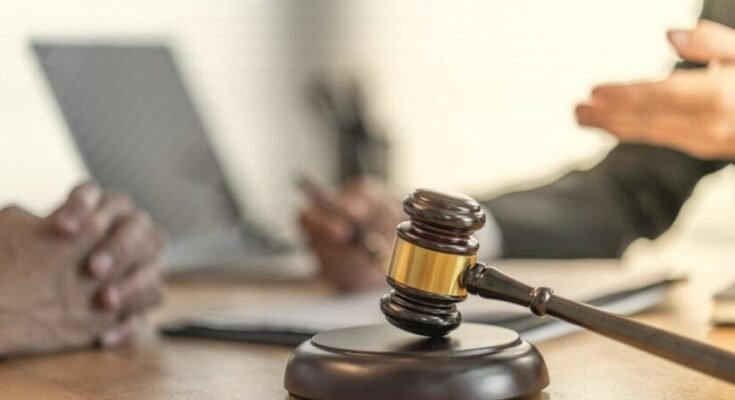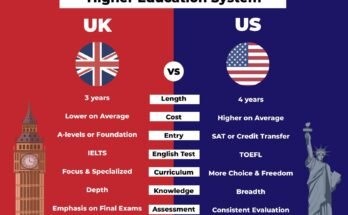You are in the right place: in this guide we will tell you about the principle of the separation of state powers , from its origin to its application today.
The division of powers is one of the cardinal principles of the liberal state; this division consists in the identification of three public functions within the sovereignty of the state – legislation, administration and jurisdiction – and in the attribution of the same to three distinct powers of the state, understood as organs or groups of organs of the state independent from the other powers .
The three powers of the state are:
- The legislative power
- Executive power
- The judiciary
But let’s see specifically what these three powers consist of, why the need to split them has arisen and who holds them.
What you need to know about the separation of state powers
What are the powers of the state and who is entitled to exercise them? Why did Montesquieu play a fundamental role in this process? We will answer these (and many other) questions in the next paragraphs of our guide dedicated to the students.
Division of powers: the origin
Although it is associated with the modern era, the idea of the separation of powers has its roots in classical Greece : in the philosophical reflection of the times, the so-called mixed government was seen as an antidote to the possible degeneration of “pure” forms of government, in which all power is concentrated in a single subject.
For example, Aristotle, in Politics, outlined a form of mixed government, defined politics (later adopted also by Thomas Aquinas), in which the characters of the three simple forms theorized by him converged (monarchy, aristocracy, democracy); he also distinguished three moments in the activity of the State: deliberative, executive and judicial.
Thanks to the work of Locke the principle of separation of powers became more and more similar to what we know today, which we attribute mainly to Montesquieu.
Montesquieu and three powers
As we have said, the modern theory of the separation of state powers is associated with Montesquieu.
The French philosopher, in the Spirit of the Laws, published in 1748, bases his theory on the idea that:
“Anyone who has power is led to abuse it; he goes as far as he finds no limits […]. In order not to abuse power, it is necessary that […] power stops power ”.
It also identifies three powers (understood as functions) of the State – legislative, executive and judicial – which he describes in this way:
“On the basis of the first of these powers, the prince or magistrate makes laws forever or for some time, and corrects or abrogates existing ones. According to the second, he makes peace or war, sends or receives embassies, establishes security, prevents invasions. According to the third, he punishes crimes or judges private parties “, because” an indivisible and unlimited sovereignty is always tyrannical.
The three powers today
The principle of the three powers of the state is present in modern states, especially in democracies. Generally:
- The legislative power , that is the power to make laws, belongs to the Parliament, as well as possibly to the parliaments of the federated states or to the similar bodies of other territorial bodies with legislative autonomy;
- The executive power , ie the power to enforce the rules, is attributed to the bodies that make up the government and, under the latter, the public administration;
- Judicial power is attributed to the judges.
It should be emphasized that, in addition to the separation of powers thus understood, called horizontal or functional, there is also talk of vertical or territorial separation of powers, with reference to the distribution of the exercise of public functions on several territorial levels (state and other territorial bodies).
The vertical system is reflected in the federal systems and, in fact, coexists with the functional one: for example, in the Italian system the legislative function, in addition to being separate from the executive and judicial one, is exercised on two territorial levels (state and regional) .
In the event that there is no strict separation of functions, because bodies belonging to different powers contribute to their exercise, we speak of the balancing of powers or, with an expression borrowed from US constitutional law, the system of checks and balances.
In Italy
Let’s see how the separation of the powers of the state (legislative, executive and judicial power) is distributed in our country.
In our system the legislative power belongs – pursuant to art. 70 and ss. Of the Constitution – to Parliament, the executive power – pursuant to art. 92 and ss. Of the Constitution – to the Government, the judiciary – pursuant to art. 101 and ss. Cost – to the Judiciary.
However, the division of powers nevertheless requires a certain degree of collaboration between the organs of the state without which one would fall into constitutional conflict and disorder.
Legislative power
Legislative power in Italy lies with the Parliament. This body is elected by the people and represents precisely the highest form of democracy.
Our Parliament is a bicameral body, that is, made up of two chambers: the Chamber of Deputies and the Senate of the Republic. The two chambers have identical powers and for this reason we speak of “perfect bicameralism”.
As defined by art. 70 of the Constitution, the legislative function is exercised “collectively”: this translates into the need for a favorable vote by both the Chamber of Deputies and the Senate.
The laws are formed following a specific process, which provides for:
- Initiative or proposed law;
- Approval (takes place article by article and then with the final vote on the entire law);
- Promulgation, which consists in a check of regularity and constitutionality by the President of the Republic;
- Publication in the Official Gazette.
Executive power
Executive power in Italy is in the hands of the government. The Government is vested with the powers relating to the fulfillment of the tasks provided for by the law and, for this reason, the ministerial offices that deal with the Public Administration underlie this body. In addition to executive power, the government also exercises those of direction, impulse and political direction.
In particular cases, the Government also fulfills the legislative function, through two instruments: the law decree and the legislative decree.
Judicial power
Judicial power belongs to the Judiciary, a group of independent bodies (the judges), whose task is to decide disputes by applying the law.
Decisions made by judges are called judgments. The Judiciary is made up of ordinary and special judges; in any case, the essential aspect of judges is their exclusive subjection to the law and therefore independence from any other power.
Studying law: Unicusano degree course
Is studying law your dream? The degree course in Law of the Telematic University Niccolò Cusano is the ideal solution for you.
Our degree program has among its objectives:
- The acquisition of a mastery of the elements of the basic legal culture, national and European, also with case studies techniques and methodologies, in relation to issues useful for the understanding and evaluation of principles and institutes of modern and contemporary positive law;
- The deepening of historical knowledge that makes it possible to evaluate the institutions of modern positive law also in the perspective of their historical evolution;
- The acquisition of skills in the design and drafting of juridical texts (normative, contractual and procedural) adequately reasoned, also produced with the use of IT tools;
- The acquisition of interpretative skills, case analysis, legal qualification, understanding, representation, evaluation and awareness to face interpretative and application problems of positive law.




